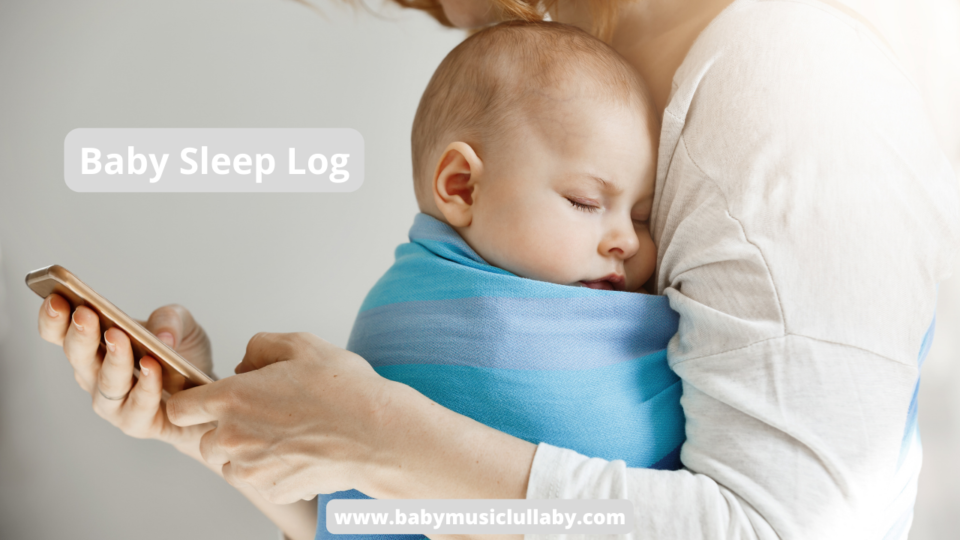Contents [hide]
Introduction
Tracking your baby’s sleep patterns is essential for understanding their sleep needs and establishing healthy sleep routines. A baby sleep log is a valuable tool that allows parents to monitor and record their baby’s sleep habits. In this article, we will explore the benefits of using a baby sleep log, how to create one, and provide tips on effectively tracking your baby’s sleep patterns.
1. Why Use a Baby Sleep Log?
Understanding Sleep Patterns
A baby sleep log provides valuable insights into your baby’s sleep patterns. By recording sleep duration, wake-up times, and nap lengths, you can identify trends and patterns. This understanding helps you make informed decisions about your baby’s sleep routine and identify any areas that may need adjustment.
Establishing Consistency
Consistency is key when it comes to promoting healthy sleep habits. A baby sleep log helps you establish a consistent sleep schedule by tracking sleep times and durations. It allows you to create a predictable routine that helps your baby develop a sense of security and better sleep quality.
Identifying Sleep Challenges
A baby sleep log can help you identify any sleep challenges your baby may be facing. By tracking their sleep patterns, you may notice patterns of night wakings, difficulty falling asleep, or irregular sleep durations. This information can guide you in addressing these challenges and seeking appropriate solutions.
2. How to Create a Baby Sleep Log
Creating a baby sleep log is simple and can be done using pen and paper or digital tools. Here’s how to get started:
Choose a Format
Decide whether you prefer a physical notebook or a digital format for your baby sleep log. Physical notebooks provide a tangible record, while digital options offer convenience and easy data analysis.
Record Essential Sleep Details
In your baby sleep log, include the following details:
- Date: Start by recording the date of each sleep entry.
- Sleep Duration: Note the total duration of your baby’s sleep, including naps and nighttime sleep.
- Wake-up Times: Record the time your baby wakes up from sleep.
- Nap Details: Document the number and length of naps taken throughout the day.
- Bedtime Routine: Include any details about your baby’s bedtime routine, such as bath time or reading a story.
Additional Notes
Leave space for additional notes where you can record any observations or specific sleep-related events, such as night wakings, feeding times, or changes in sleep environment.
3. Tips for Effective Baby Sleep Tracking
Be Consistent
Consistency is crucial for accurate sleep tracking. Try to record sleep details consistently for each sleep period, including naps and nighttime sleep. This helps you identify patterns and make adjustments as needed.
Use a Timer or Alarm
To ensure accuracy in recording sleep duration, use a timer or alarm to track the start and end of each sleep period. This helps you track the actual duration of your baby’s sleep and avoid estimation errors.
Involve Both Parents
If possible, involve both parents in tracking your baby’s sleep. This allows for shared responsibility and a more comprehensive understanding of your baby’s sleep patterns.
Analyze and Adjust
Regularly review your baby sleep log to identify any patterns or trends. Use the information to make adjustments to your baby’s sleep routine or seek professional advice if needed.
Frequently Asked Questions (FAQs)
- Can I use a baby sleep app instead of a sleep log? Yes, baby sleep apps can be a convenient alternative to a sleep log. They offer digital tracking, sleep analysis, and additional features like reminders and sleep tips.
- How long should I track my baby’s sleep patterns? It’s beneficial to track your baby’s sleep patterns for at least a few weeks to identify consistent patterns and make informed decisions about their sleep routine.
- Is it necessary to track nighttime sleep and naps separately? Yes, tracking nighttime sleep and naps separately provides a comprehensive understanding of your baby’s sleep patterns and helps identify any discrepancies or issues.
- Should I track other factors like feeding and diaper changes in the sleep log? While tracking feeding and diaper changes can be helpful, it’s not necessary for a sleep log. However, noting these details can provide a broader picture of your baby’s overall routine.
- Are there any recommended baby sleep log apps? Yes, several baby sleep log apps are available, such as Baby Sleep Log and Huckleberry. Explore different options and choose the one that suits your preferences and needs.

Conclusion
A baby sleep log is a valuable tool for parents to track and monitor their baby’s sleep patterns. It provides insights into sleep durations, wake-up times, and nap lengths, helping establish consistent sleep routines and identify any sleep challenges. By using a baby sleep log, you can gain a deeper understanding of your baby’s sleep needs and promote healthy sleep habits.

 Subscribe to Get Soothing Lullabies to Help Your Baby to Sleep
Subscribe to Get Soothing Lullabies to Help Your Baby to Sleep
1 comment
[…] Baby Sleep Log […]